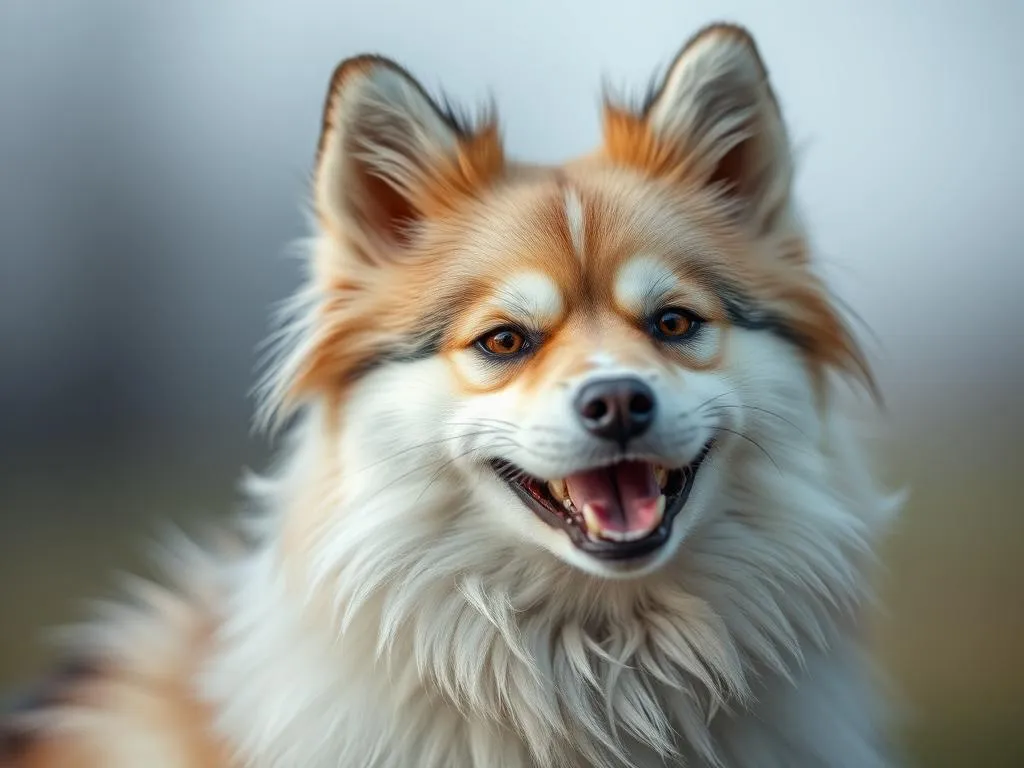
Introduction
When it comes to choosing a furry companion, understanding different dog breeds is crucial. Each breed has its own unique traits and characteristics, making them suitable for different lifestyles and families. One breed that has gained significant attention in recent years is the Pomsky. This adorable mix of a Siberian Husky and a Pomeranian not only stands out for its striking appearance but also for its vibrant personality. As the popularity of Pomskies continues to rise, it’s essential to delve into the breed’s traits, care requirements, and suitability for various households.
Understanding Dog Breeds
What is a Dog Breed?
A dog breed refers to a specific group of domestic dogs with unique characteristics, including physical traits, temperament, and behavior. Breeds are developed through selective breeding practices that aim to enhance certain traits within a lineage. Historically, dog breeds were formed to fulfill specific roles, such as herding, hunting, or guarding. Understanding the significance of dog breeds helps potential owners make informed decisions about which breed fits their lifestyle and family dynamics.
Classification of Dog Breeds
Dog breeds are typically categorized into groups based on their characteristics and original purposes. Some common categories include:
- Working: Breeds developed to perform tasks such as guarding, pulling sleds, or search and rescue.
- Sporting: Breeds used for hunting and companionship, known for their energy and enthusiasm.
- Toy: Small breeds that are primarily bred for companionship.
- Herding: Breeds that assist in managing livestock.
- Hound: Breeds developed for hunting, often with keen senses of smell.
Understanding these classifications can help potential owners choose a dog that aligns with their lifestyle and needs.
The Pomsky Breed
History of the Pomsky
The Pomsky is a relatively new breed, emerging in the early 2000s as breeders sought to create a smaller version of the Siberian Husky. The goal was to combine the striking appearance of Huskies with the compact size of Pomeranians, resulting in a playful and affectionate companion. Although the breed is not officially recognized by major kennel clubs, it has quickly gained popularity due to its unique attributes and endearing nature.
Physical Characteristics
Pomskies typically inherit a blend of physical traits from their parent breeds. They generally weigh between 20 to 30 pounds and stand about 10 to 15 inches tall. Their appearance can vary significantly, with some resembling miniature Huskies and others taking on more Pomeranian-like features.
Coat Types and Color Variations: The coat of a Pomsky can be a mix of the thick, double-layered fur of a Husky and the fluffy coat of a Pomeranian. Common color variations include:
- Black and white
- Gray and white
- Brown and white
- Cream
- Blue and white
Their expressive eyes can be blue, brown, or even one of each, adding to their charm.
Temperament and Behavior
Pomskies are known for their lively and playful temperament. They are intelligent and eager to please, making them relatively easy to train compared to other breeds. However, they do exhibit some traits from their Husky lineage, which can include a stubborn streak.
Comparison with Parent Breeds: While Huskies are known for their high energy and independent nature, Pomeranians are often more affectionate and eager to cuddle. Pomskies tend to strike a balance between these two traits, often seeking both play and companionship.
Common behavioral traits include:
- High energy levels
- Playfulness
- Affectionate nature
- Strong-willed tendencies
Understanding these traits can help prospective owners prepare for a lively and engaging dog.
Caring for a Pomsky
Nutrition and Diet
Proper nutrition is vital for the health and well-being of a Pomsky. A balanced diet consisting of high-quality dog food, whether dry kibble or wet food, is essential. Look for foods that list meat as the primary ingredient and avoid those with fillers such as corn or soy.
Common Dietary Issues: Pomskies can be prone to obesity if overfed or not exercised adequately. It’s crucial to monitor their food intake and adjust portions based on their activity level. Consult your veterinarian for personalized dietary recommendations.
Exercise Requirements
Pomskies are energetic dogs that require regular physical activity to stay healthy and happy. Daily walks, playtime, and mental stimulation through interactive toys are essential to prevent boredom and destructive behavior.
Suggested Exercise Routines: Aim for at least 30 to 60 minutes of exercise each day. Activities like fetch, agility courses, or even dog-friendly hiking can provide both physical and mental stimulation.
Grooming Needs
Grooming is an essential aspect of caring for a Pomsky, especially given their thick coats. Regular brushing, at least once a week, is necessary to prevent matting and reduce shedding. During shedding seasons, more frequent brushing may be required.
Seasonal Grooming Considerations: Pomskies typically shed more during spring and fall, requiring additional grooming to manage loose fur.
Health Considerations
Like all breeds, Pomskies can be prone to certain health issues. Common health concerns include:
- Hip dysplasia
- Eye problems, such as cataracts
- Patellar luxation
Regular veterinary check-ups and preventative care, including vaccinations and dental cleanings, are crucial for maintaining your Pomsky’s health.
Training a Pomsky
Basic Obedience Training
Starting training early is essential for Pomskies. They respond well to positive reinforcement methods, such as treats and praise. Socialization is also critical; exposing your Pomsky to various people, environments, and other animals can help them become well-adjusted adults.
Recommended Training Techniques: Use short, engaging training sessions to keep your Pomsky focused. Consistency is key, so practice commands regularly and incorporate them into daily routines.
Behavioral Challenges
While Pomskies are generally friendly, they can inherit some stubbornness from their Husky parent. Common behavioral issues may include:
- Excessive barking
- Digging
- Separation anxiety
Addressing these challenges involves patience and consistent training techniques. Redirecting negative behaviors through positive reinforcement can be effective.
Advanced Training and Activities
Pomskies have the potential to excel in various activities, including agility training and obedience competitions. Their intelligence makes them quick learners, and engaging them in activities can provide necessary mental stimulation.
Engaging Activities for Mental Stimulation: Puzzle toys, scent games, and interactive play can keep your Pomsky entertained and challenged.
Living with a Pomsky
Ideal Living Conditions
Pomskies can adapt to both urban and rural settings, but they thrive in environments where they have space to play and explore. Adequate yard space is ideal, but daily walks and trips to parks can also fulfill their exercise needs.
Importance of Space and Safety Considerations: Ensure your living area is safe for a curious Pomsky. Secure fencing and safe spaces for play can help prevent escapes and accidents.
Compatibility with Families and Other Pets
Pomskies are generally good with children and can make excellent family pets. Their playful and affectionate nature often endears them to kids, but supervision is essential to ensure positive interactions.
Assessing if a Pomsky is the Right Fit for Your Family: Consider your family’s activity level and lifestyle. Pomskies thrive in active households where they receive ample exercise and attention.
Adoption and Purchase Considerations
If you’re considering adding a Pomsky to your family, it’s vital to choose a reputable source. Research breeders carefully and look for those who prioritize the health and temperament of their dogs. Alternatively, consider adopting from rescue organizations that specialize in this breed.
Key Questions to Ask: When meeting a breeder or rescue, inquire about the dog’s health history, socialization practices, and any potential behavioral issues.
The Popularity of Pomskies
Current Trends in Dog Ownership
The popularity of Pomskies has surged in recent years, driven by their unique appearance and playful personalities. Statistics indicate a growing interest in hybrid breeds, with Pomskies being among the top choices for dog lovers.
Social Media Influence on Breed Popularity: Platforms like Instagram and TikTok have showcased the adorable antics of Pomskies, further fueling their popularity and demand.
Community and Resources
Numerous online communities and forums exist for Pomsky owners, providing valuable resources for training, care tips, and social connections. Engaging with other Pomsky enthusiasts can enhance your experience as an owner and provide support.
Conclusion
The Pomsky is a delightful breed that combines the best traits of its parent breeds, the Siberian Husky and the Pomeranian. With their striking looks, playful demeanor, and affectionate nature, they can make wonderful companions for active families. However, potential owners should thoroughly research the breed’s needs and characteristics to ensure a good fit for their lifestyle. With proper care, training, and love, a Pomsky can bring joy and companionship to any home.









